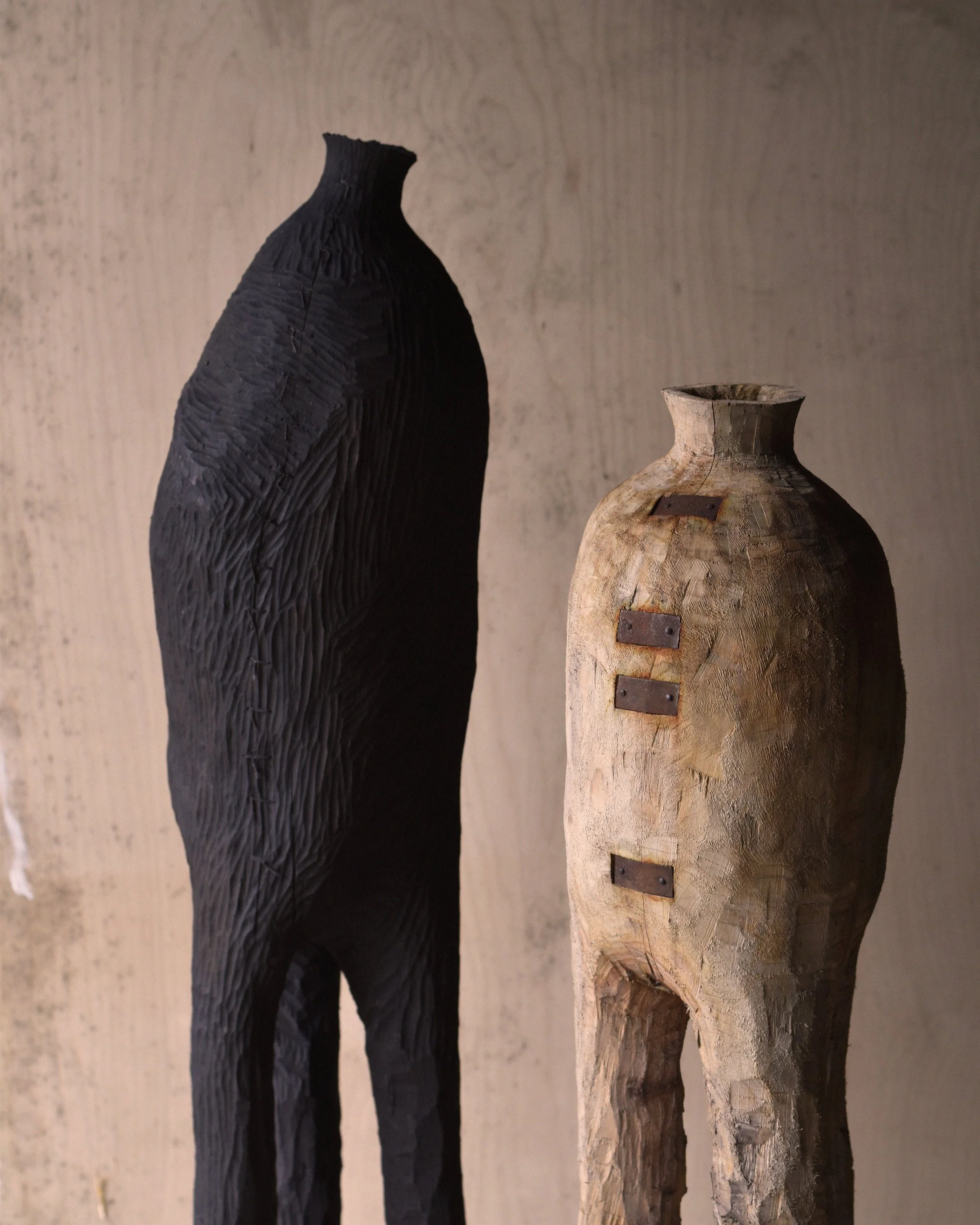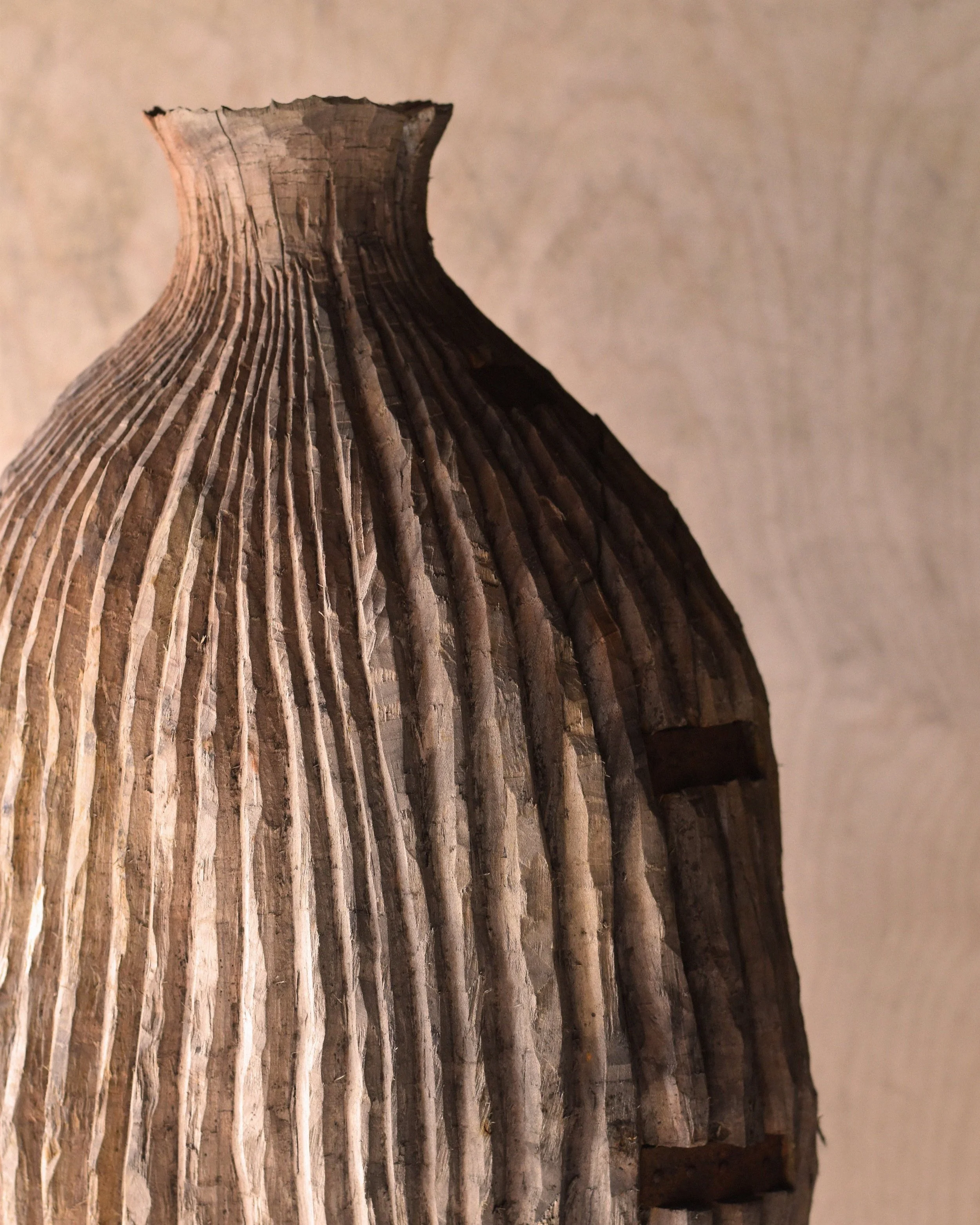Cengiz Hartmann
Cengiz, please introduce yourself:
I am Cengiz and I like to make art.
Since 2019 I have been working as a research assistant in the department of interior design at Technische Hochschule Ostwestfalen-Lippe in Detmold.
I am a member of Deutscher Werkbund
and Lippischer Künstlerbund.
I exhibit my work with galleries and at fairs internationally and work directly with private clients
on commissions.
Key full of memories 2024
#1 You describe your work as an attempt to reduce objects to the essentials without eliminating the poetry. What does this balance between reduction and poetry mean to you?
For me, reducing objects to the essential goes hand in hand with poetry as I understand it as the essential expression in things. A work of art is the outer model of inwardness.
#2 The word “grasp” plays a central role in your work, as it means both “to touch” and “to understand”. How do you put this idea into practice in your artistic processes?
I do not use any technical machines in my work process.
I would describe it as a slow, very physical, manual process that allows me to have a real relationship with the material. I do not change material, I do not force the material into a shape, I cooperate and bring it to life.
Giant Plates 2021 - 2022, High Vases since 2019
#3 How do time, weather and natural substances influence your artistic work? Do you have a specific example of a project in which these elements have played a special role?
Incorporating external influences means giving up control.
I prefer to think about the process, not the result. All works in the High Vases series are either exposed to the minerals of the earth, as I bury them, or to the influence of water and iron, as I bathe them.
#4 You talk about iterative phases of creation and reflection. Can you take us through a typical creative process? How do you know when a work is complete?
I always and constantly collect topics. Many projects mature in my head over months. Once the basic idea seems coherent, I start working with the material - then shapes, colors, smells emerge. During this phase of the process, I trust my intuition; it is condensed experience.
Natural processes (almost) never end, but I can slow them down and decide that one state is better than the previous one. The material tells me when it is good.
Giant Plates 2021 - 2022
#5 What do you want to convey to people who view your art or live with your designs? Is there a central message you want to share through your work?
There are some works of art that are based on relevant questions of our time (and of all times). Where do we come from? How do we treat each other? How do we treat ourselves? Nevertheless, I consider the associations and stories of the people who engage with my work and live with them to be at least equal.
#6 What are your future projects or goals? Are there any new materials or topics you would like to explore?
Very substantive and sustainable: In my practice as an artist, I try to comprehend the uniqueness of the outside - and by that the inside, the essence. I am on the way.
High Vases since 2019
#7 How do you see your role as an artist in today‘s society?
Artists have the gift of making the unspeakable visible.
I think this is very necessary.
#8 How does your environment influence your work?
The real material and natural processes have an influence on the external appearance of my work. The intellectual environment has an influence on the topics I deal with. The circumstances under which I work influence the objects a lot.
#9 Who or what inspires you and your work? (three things)
Is there someone whose work you particularly admire?
The work of Doris Salcedo and Giuseppe Penone is admirable.
#10 What do you currently read, watch, listen to?
The last thing I read: Karl Ove Knausgård, Der Wald und der Fluss. Ben Howard is almost always playing while working in the Atelier.
High Vases since 2019
Links
Website: https://cengizhartmann.cargo.site
Instagram: cengizhartmann
Photo Credits: © Cengiz Hartmann
Interview by Lisa Puschmann








